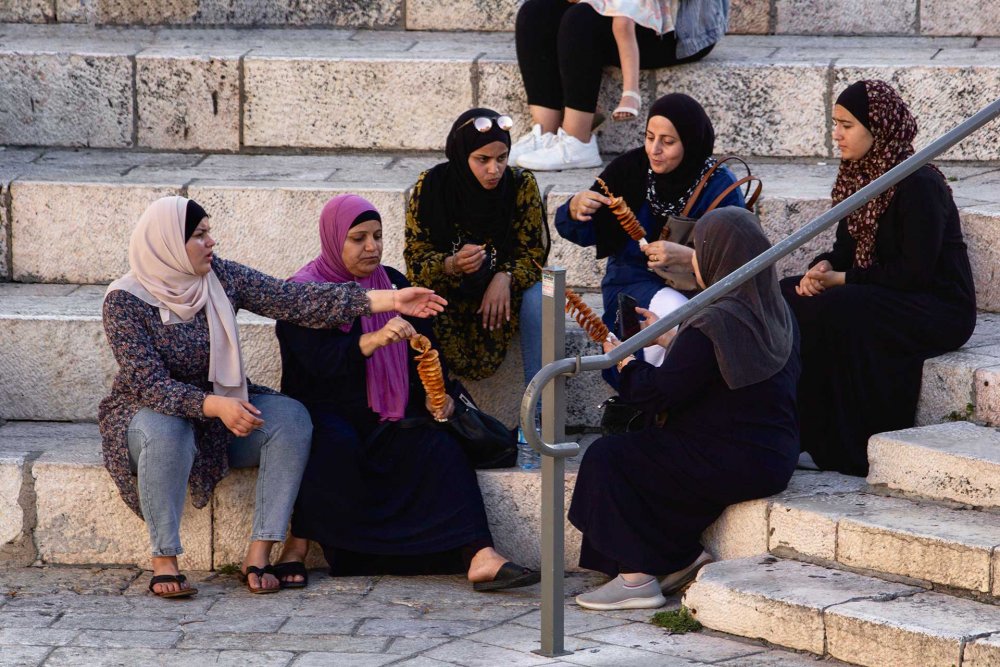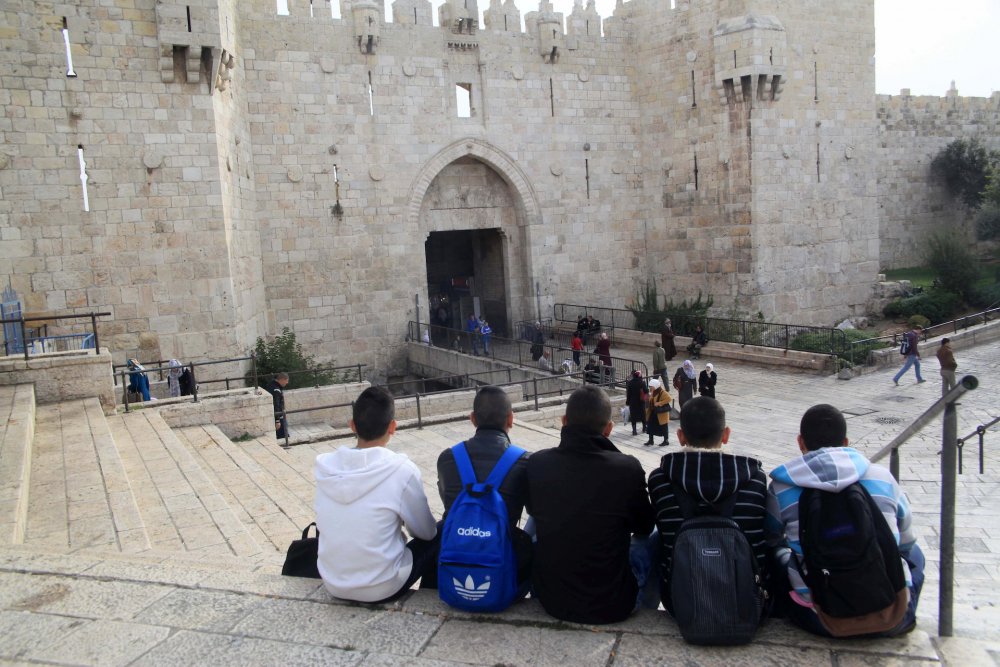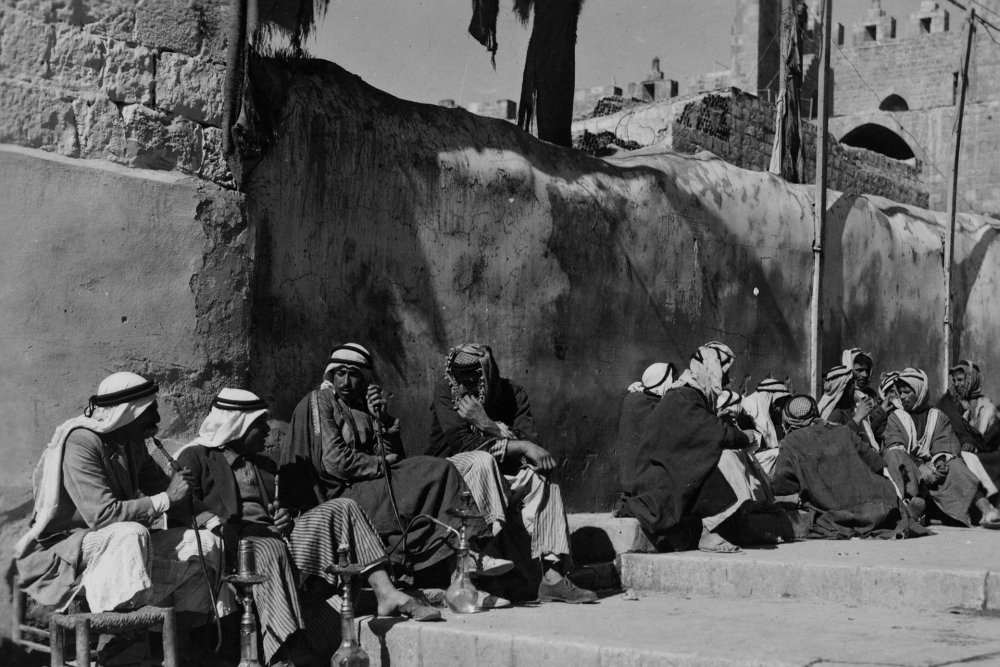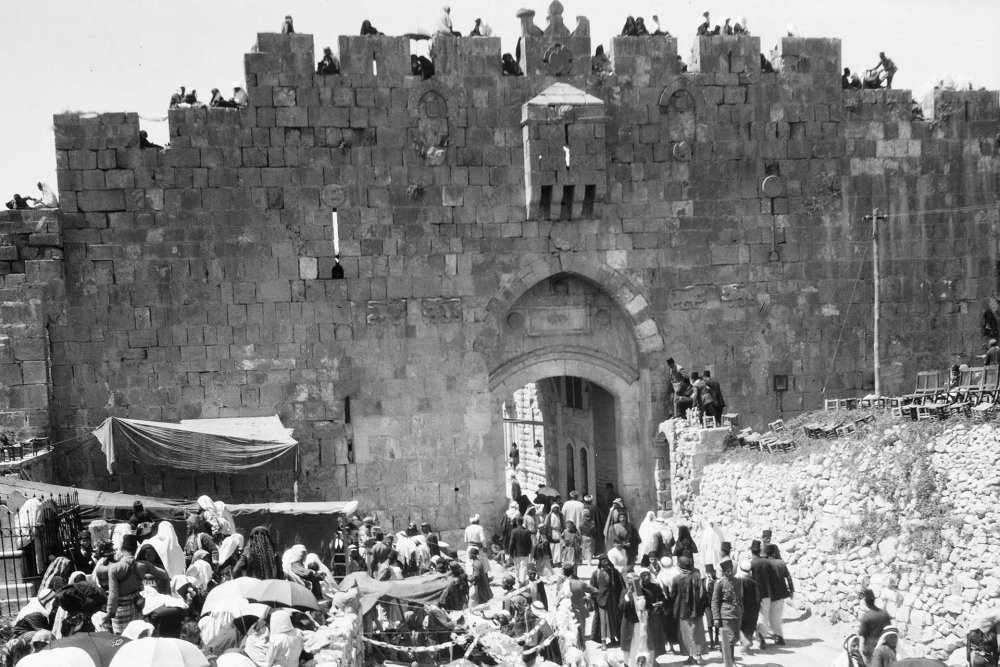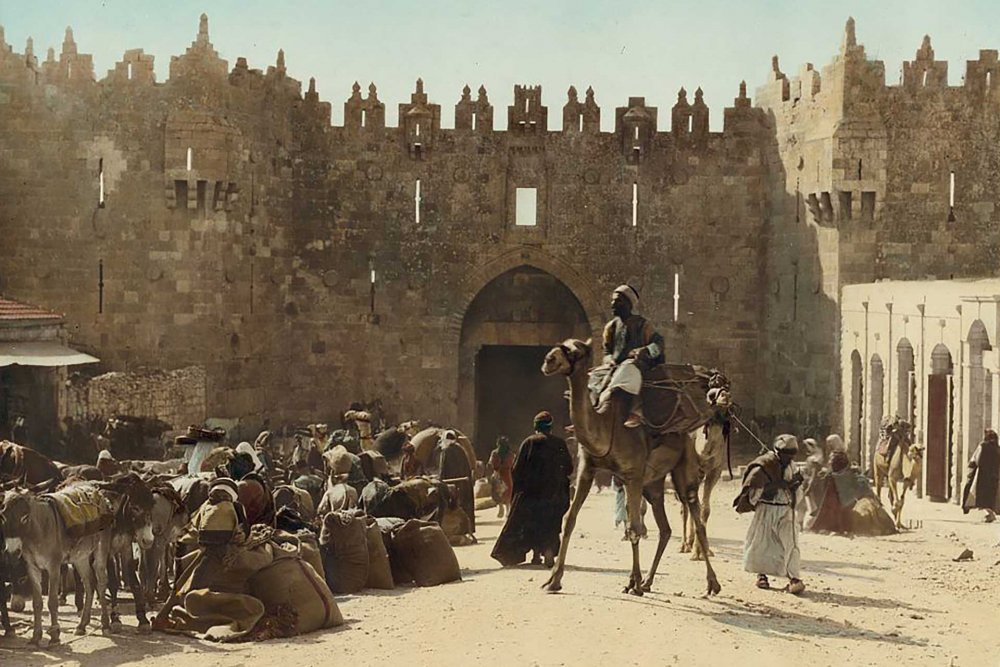Bab al-Amud, or Damascus Gate, has long been a community space for the Palestinians of Jerusalem. They gather there, sit on the steps to drink coffee or chat with friends and family, connect, and use it as a touchstone point for celebrations (such as when Morocco advanced to the World Cup semifinals) or protest (such as during the May 2021 Unity Uprising).
This space’s significance as a community plaza far predates Israel’s occupation of East Jerusalem, as the photos in this Blog Post show.
Keenly aware of this, and of the collective energy the community derives from the space, the city has in recent years progressively attempted to prevent Palestinians from gathering in or using it.
For example, in February 2018, the city installed four permanent watchtower gates from where security forces surveil the plaza, often hauling in detained youths to beat and harass them inside.
In October 2020, without consulting the Palestinian community, the city renamed the Damascus Gate Steps to “Hadar and Hadas Steps” in Hebrew, after Israeli border police officers Hadar Cohen and Hadas Malka, who were killed in confrontations with Palestinians at Damascus Gate in 2016 and 2017, respectively.
In 2021, the police barricaded and closed off the steps at some points during the uprising.
In February 2023, a Palestinian journalist told Amnesty International:


